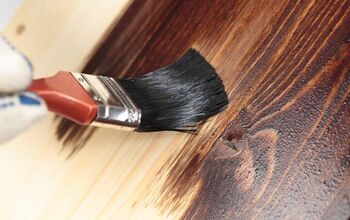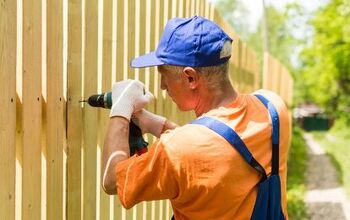How Long Does It Take For Asphalt To Dry? (Find Out Now!)

The outdoor pavement looks a little rough, and it’s time for a new layer of asphalt. However, before you get on your handyman clothes, you will want to check if your weather is favorable for pouring. Then, how long you will need to stay off it while it dries?
Generally, you need to wait 3 full days before allowing heavy traffic on your newly poured asphalt. External factors, such as weather, can affect the drying time. Asphalt won’t fully cure or harden for 6 to 12 months, so it is important to not park or leave heavy equipment in the same spot while it cures.
We have some pro tips on which conditions are ideal for pouring asphalt and we’ll fill you in on how you can get your blacktop to dry faster.
Do You Need Asphalt Paving Services?
Get free, zero-commitment quotes from pro contractors near you.

Asphalt Drying Time vs. Curing Time
While asphalt is considered dry between 24 hours and 3 days, The time it takes to cure is a different ball game.
Asphalt will dry relatively quickly. Soon after it is poured you will be able to walk on it, within 24 hours your surface should hold up under rain, and after 3 days your asphalt should be hard enough to support car traffic. However, your surface will continue to be malleable until it has cured.
Curing time takes much longer for asphalt than other materials (such as concrete). While concrete can cure within one month’s time, asphalt could take up to 1 year to fully cure. After the asphalt has dried, you will be able to park and drive on it without a problem.
However, you will want to make sure not to leave a permanently parked car on its surface (or do donuts in the driveway!) while it cures. You will need to treat your blacktop somewhat gently for the first 6 months to a year. If not, you could get ridges and uneven places in your drive.
How to Make Asphalt Dry Faster
The hardness or softness of your asphalt will depend greatly on environmental factors. Although it may seem counterintuitive, water can actually help your asphalt dry faster. On hot summer days, water helps the asphalt to cool down and harden. Just make sure that water is not left pooling on the surface as this can create permanent indentures!
What Affects Drying Time?
Asphalt can harden or soften according to the weather outsides. When you are pouring asphalt and waiting for it to dry, these weather conditions can affect your asphalt:
- Hot weather
If you pour asphalt on days that are over 100 degrees, you may have a hard time getting your pavement to set up. It is usually better to wait until the weather falls under this temperature to pour asphalt.
- Cold weather
Cold weather is not ideal either for asphalt. Cold weather can cause your asphalt to harden prematurely. This means that your pavement might dry unevenly and you could end up with bumps in your surface.
- Rain
Humidity and rain will slow down asphalt’s drying time. Also, if you lay asphalt in the rain, you could compromise its structure. The rain mixes with your asphalt to make a weak bond. If the rain holds off for at least 24 hours after paving, you should be fine.
- Best Case Scenario
Although nature doesn’t always work in our favor, we can always check the weather prognosis to try to pour asphalt in good weather. The best conditions for pouring asphalt will be on a sunny day with low humidity and a temperature under 100 degrees. A slight wind is a bonus!
Tips for Taking Care of Freshly Poured Asphalt
After you have successfully poured a new layer of asphalt, you will want to make sure to protect your new surface. Here are some tips for taking care of your asphalt while it cures:
Distribute the Weight
If you have a trailer, camper, or a car that stays parked, you can place plywood under your vehicles’ tires and jack. This helps to better distribute weight and will prevent leaving marks from your vehicles.
Change up your parking spot
Many times we default to one favorite parking spot in our driveway. While asphalt is curing, try to change up your parking so you don’t create indentures on your surface over the course of the year.
Stay inside the lines
The edges of your newly poured asphalt may be thinner than the rest of your drive. If this is the case, make sure to not drive on these weaker areas while it is curing. You could end up wearing down the edges before it has time to cure.
Another option would be to add a curb to the edges of the drive to keep your asphalt in place.
Maintain Repairs
Car fluids (such as anti-freeze, gasoline, and oil) can damage the surface of your asphalt, especially when it is freshly poured. These fluids can eat away at your surface and leave behind holes. You will want to be sure to patch these holes before they extend, and also fill in cracks caused by winter frost.
Seal Asphalt
After your blacktop has cured, you can choose to seal it. By sealing your asphalt, you can give your pavement added protection. Sealing will protect your surface from the damaging influence of oil spots, pooling water, winter frost, and even UV rays. It is not very expensive and can protect your investment long-term.
Do You Need Asphalt Paving Services?
Get free, zero-commitment quotes from pro contractors near you.

Related Questions
Which is cheaper, asphalt or concrete?
Asphalt is generally the cheaper option when laying a road or driveway. In fact, it can be up to 50% cheaper! On average, asphalt costs between $2 and $4 per square foot while concrete costs between $4 and $6 per square foot.
Is it hard to pave a driveway with asphalt?
Paving your own driveway with asphalt can be hard work, but it is doable if there are at least 2 of you working on it. Even after factoring in the costs of equipment rentals, you should still be able to save money by doing it yourself.
What happens if fresh asphalt sticks to tires?
In most cases, the asphalt will harden and fall off on its own as you head down the road. However, if the asphalt thickly covers your tires, you will want to remove it from your tires before getting on the highway.

Alex Praytor is a native Texan who got her degree in English Literature and decided to travel the globe. She finds the architecture and design of homes across cultures fascinating. In her spare time, she visits coffee shops with her family and creates projects for their own home. Alex enjoys sharing tips on how to keep repairs up to date while turning a house into a home.
More by Alex Praytor



























